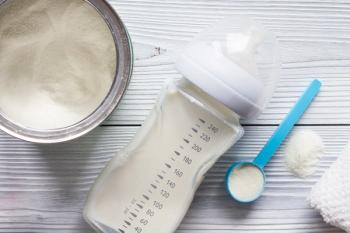
Can fewer daily doses of cephalexin treat MSSA?
A pharmacokinetic model suggests that although 4 daily doses of cephalexin are the standard of care for treating methicillin-susceptible Staphylococcus aureus (MSSA) infections, 2- or 3-dose daily regimens (BID or TID) could achieve similar results.
A pharmacokinetic model suggests that although 4 daily doses of cephalexin are the standard of care for treating methicillin-susceptible Staphylococcus aureus (MSSA) infections, 2- or 3-dose daily regimens (BID or TID) could achieve similar results.
To develop the model, investigators used data from a pharmacokinetic study in 12 children with bone and joint MSSA infections receiving cephalexin in 53 concentrations. Seven of these children were male, and median age and weight were 7.6 years and 25 kg, respectively. Samples to determine total cephalexin concentration in the blood were taken before the drug dose and at 1, 1.5, 2, and 6 hours after it. Investigators performed simulations to determine a BID and TID dosing regimen that would allow 90% or more of children to achieve the pharmacodynamics target for MSSA (when the free drug concentration exceeds the minimum inhibitory concentration [MIC] of the bacteria for at least 40% of the dosing interval).
For BID dosing, a dose of 45 mg/kg BID was required for an MIC of 1 or 2 mg/L and 80 mg/kg for MIC of 4 mg/L. For TID dosing, a dose of 25 mg/kg was needed for an MIC of 1 or 2 mg/L and 45 mg/kg for an MIC of 4 mg/L. For both BID and TID dosing regimens, a total daily dose of more than 1 mg/kg was required if the MIC was 4 mg/L.
The probability of reaching the pharmacodynamic target for MSSA was similar for doses of 80 mg/kg BID, 45 mg/kg TID, and the current standard of care, 25 mg/kg 4 times a day. Based on their modeling, investigators developed a table for a proposed BID and TID cephalexin dosing regimen for MSSA infections based on the child’s weight. They noted that these regimens should be prospectively evaluated to determine their efficacy for common childhood infections (
Thoughts from Dr. Farber
I have been treating impetigo and urine infections twice a day with cephalexin for some time now with good results. This study, which will need some clinical correlation, suggests that this dosing should work for more worrisome infections, such as cellulitis. Anything that reduces the number of doses needed daily and improves compliance is a big plus in my book.
Newsletter
Access practical, evidence-based guidance to support better care for our youngest patients. Join our email list for the latest clinical updates.








